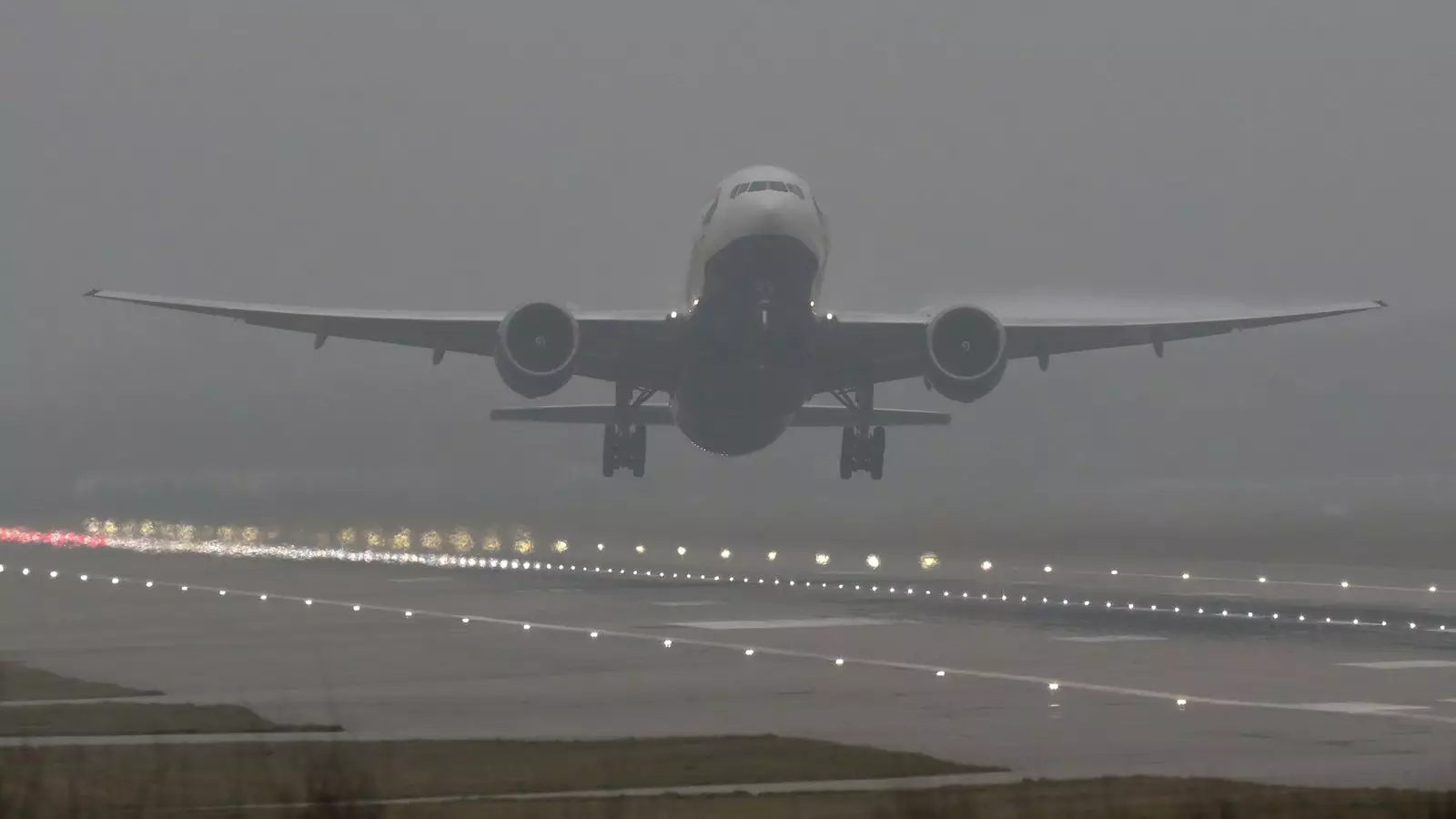As the UK grapples with heavy fog sweeping across many regions, the ripple effects on air travel have become increasingly problematic. Approximately 20,000 passengers faced disruption on Friday alone, highlighting how quickly weather can derail plans and expectations. This situation underscored the vulnerabilities inherent in air travel as the National Air Traffic Services (NATS) announced temporary air traffic restrictions at various airports to ensure passenger safety. The aim of such measures, while sometimes frustrating for travelers, is primarily to manage safety concerns stemming from low visibility.
Travel journalist Simon Calder has been active in keeping the public informed regarding these tumultuous conditions. He stated that major airports, including London City, Heathrow, and Gatwick, experienced more than 40 cancellations each within a single day. This level of disruption can create a cascading effect, leading to confusion and logistical challenges for those whose travel schedules were meticulously planned.
Among the most severely affected were Gatwick and Heathrow, which are two of the busiest airports in the UK. Reports indicated that delays were widespread, with a notable number of flight departures and arrivals disrupted. By 11 AM on Friday, Gatwick alone had experienced 35 delayed departures and 26 delayed arrivals, in addition to two cancellations. Heathrow did not fare much better, reporting 20 delayed flights scheduled to leave before the same time.
Passengers were urged to stay updated on their flight statuses before making their way to the airports. This is crucial advice, especially for individuals who had plans to travel during this peak time, as thousands of travelers aimed to kick off their holiday plans. The chaos serves as a reminder of the importance of preparedness when flying during the winter months, where weather can become unpredictable.
The Met Office reported that the heavy fog is expected to persist into the weekend, reducing visibility to as low as 100 meters in some areas. As a result, the Met Office has cautioned drivers to maintain extended braking distances and to allow extra time for all journeys. This is particularly important in southeastern regions and central England, where fog conditions are at their most severe.
Additionally, the weather outlook implies that this fog will not clear quickly, leading to prolonged disruptions as people continue to travel for leisure and holidays. The forecaster predicted that Saturday would see “murky” conditions, which unfortunately may worsen delays and potential hazards on the roads.
This situation is particularly crucial as the new year approaches, with Gatwick expecting to see its highest volume of holiday flights on Sunday, with 769 flights scheduled. The wet and windy conditions anticipated both post-holiday and on New Year’s Eve could lead to further disruptions in travel plans. The dissolving hopes for clear skies may leave travelers feeling anxious and unprepared for their journeys.
On New Year’s Eve, Edinburgh’s Hogmanay celebrations may also find themselves hindered by heavy rainfall, which has prompted organizers to advise attendees to prepare for adverse weather. Forecasts predict a yellow warning for parts of Scotland, with possible accumulations of 140 mm of rain in specific locations. As the holiday spirit blends with environmental uncertainty, the need for proactive planning becomes more crucial than ever.
As the spectacle of winter weather unfolds, travelers need to stay informed and adaptable. From booking flights to planning drives through foggy conditions, it is imperative to approach travel with an understanding of potential disruptions. While major airports are striving to mitigate the impact of the weather on air traffic, the overarching challenge remains: a weather system that behaves unpredictably, representing a common issue that besets travelers during the winter season.
This past week’s flight delays and the threat of heavy fog remind us of the interconnected nature of travel logistics, safety, and our climate. It emphasizes the importance of vigilance for both airports and travelers alike, encouraging all to remain prepared for the unexpected as we transition into a new year, potentially marked by further weather challenges.


Leave a Reply